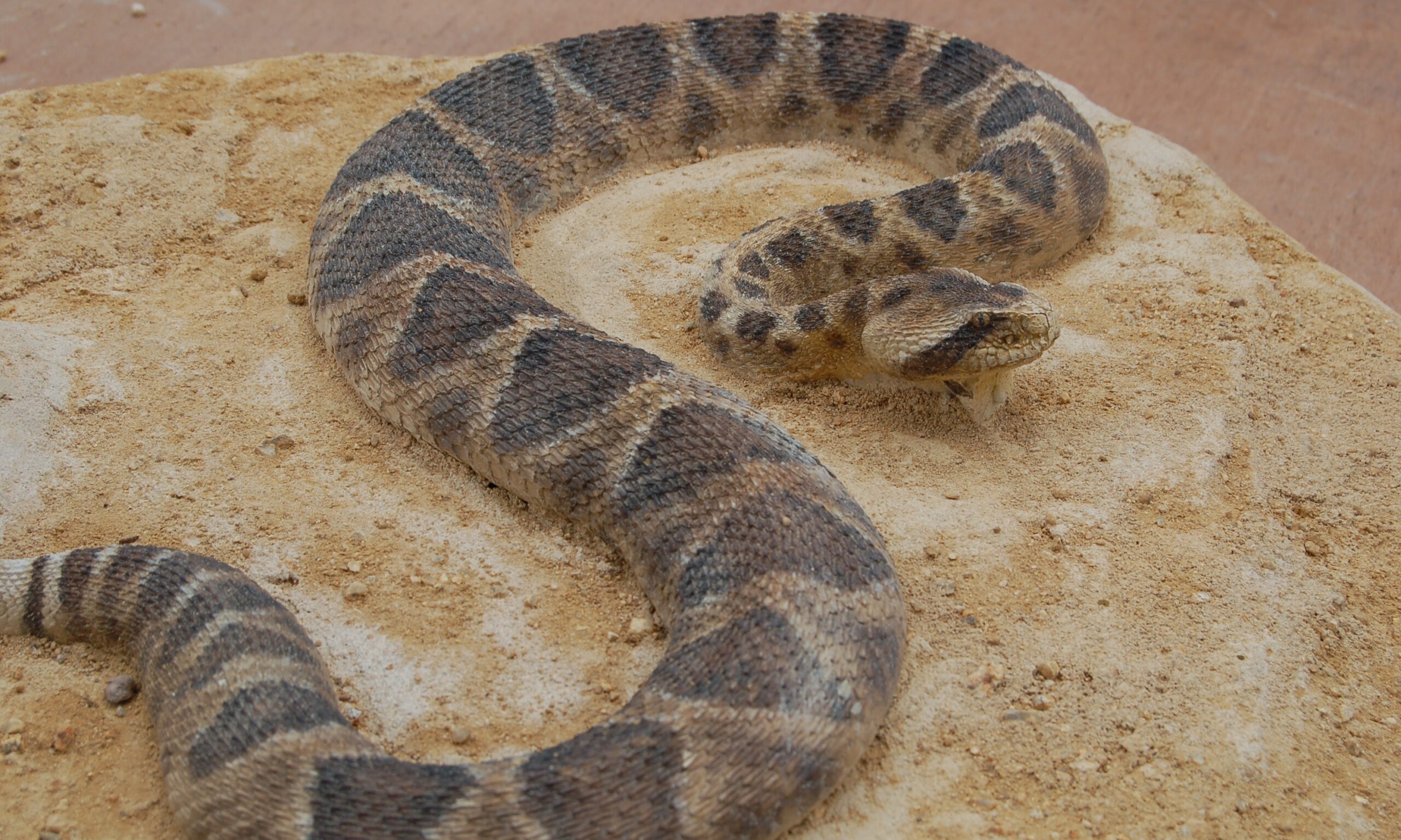Rattlesnake
Genera Crotalus

Fascinating Facts
- Rattlesnakes have heat sensing pits on their face to find warm-blooded animals.
- Adults shed their fangs every 6-10 weeks.
- Venom glands give them the “spade shaped” head that characterizes most venomous snakes.
- Their venom contains elements to immobilize and disable prey, as well as digestive enzymes to start breaking down tissues.
- The rattle contains modified hollow scales, and when shaken create a warning sign for predators to stay away.
Habitat/Diet
Most species live in open, rocky habitats, but some others can be found in prairies, deserts, marshes, or forests. They depend on a warm habitat with basking sites, plentiful with prey items like lizards, birds, and rodents.
Status in the Wild
Most species are Least Concern – IUCN 2007; Santa Catalina Island Rattlesnake is Critically Endangered – IUCN 2007
Range
The Americas, from southwest Canada to central Argentina. The majority of species are found in the American Southwest and Mexico.
Location in the Zoo
Reptiles and Birds Zone of the Sculpture Learning Plaza
